This is part 1 of 2 in the series called “Addressing WildFire Smoke As A HVAC Professional”
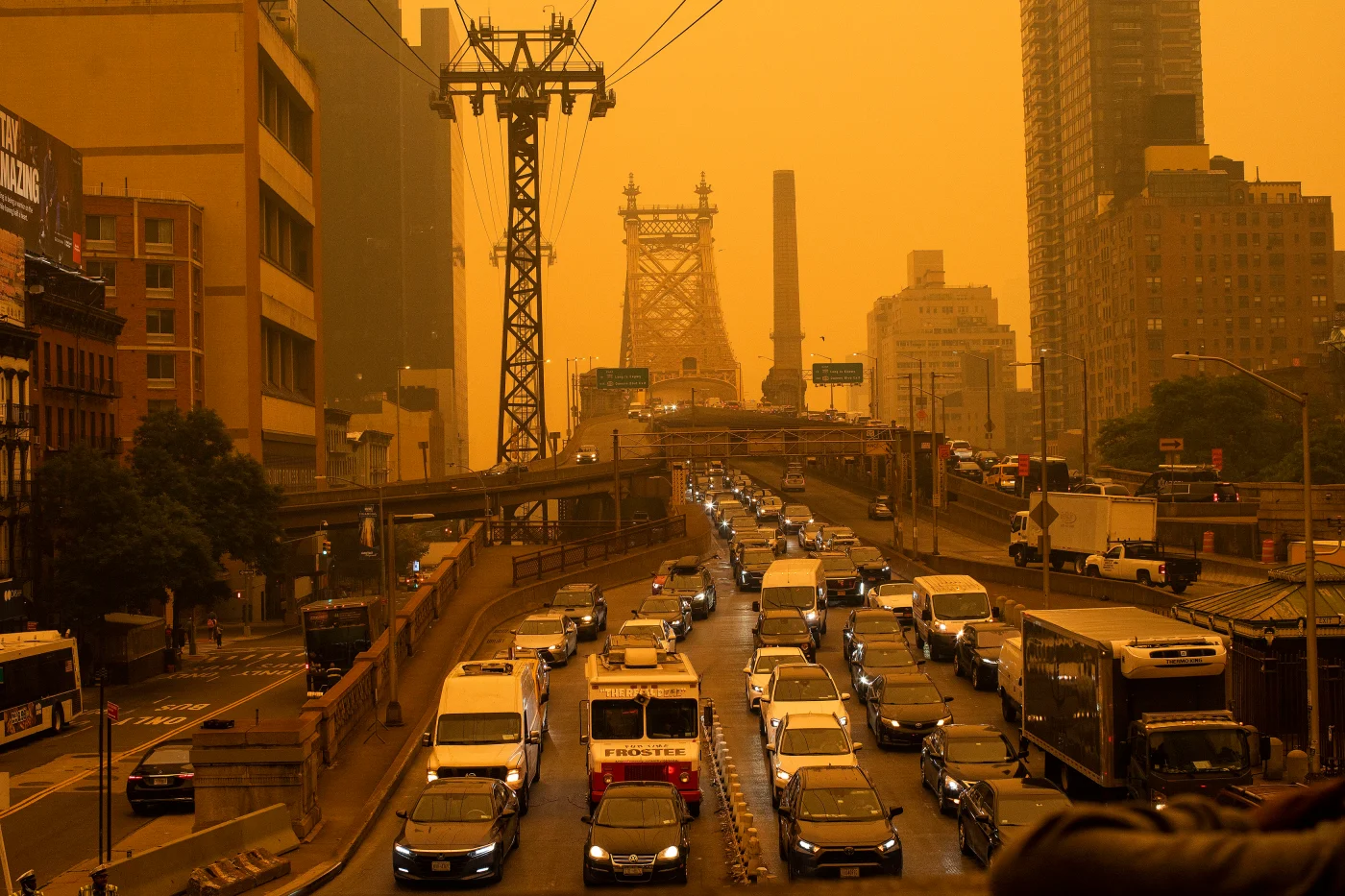
New York City on June 8th 2023, Eduardo Munoz Alvarez/Getty Images
Tl;dr:
Here’s a summary for anyone that doesn’t have time to read the full article:
- Wildfire smoke is likely to continue impacting air quality throughout the summer
- Much of the housing stock is leaky, so outdoor pollutants easily infiltrates the home and linger unless something is done
- Much of the population are classified as “sensitive” to airborne pollutants, meaning that they will need special care during wildfire smoke events
- Experts recommend people to seal up their homes (eliminate infiltration/ventilation), filter the air through central and in-room filtration, and limit activities during smoke events
- Homeowners often buy room purifiers to protect themselves, but don’t consider HVAC upgrades which could be a far better investment
Introduction:
As an HVAC professional, you spend much of your time focused on the mechanical equipment and the ductwork that moves air within a building, solving the many problems that plague heating and cooling systems. If you’re a high-performance or building science nerd, you may already go beyond the equipment, considering the building envelope, ventilation, humidity control, occupant behavior, and outdoor environment – the “home-as-a-system” (HAAS) concept.

Whether you are a HAAS nerd or not, this summer’s wildfire smoke-pocalypse is an opportunity to provide more value to your clients.
I argue that it should be the duty of an HVAC professional to improve the air quality in the homes of your customers through scientifically proven techniques. So let’s explore the problem in depth.
First, Some Background
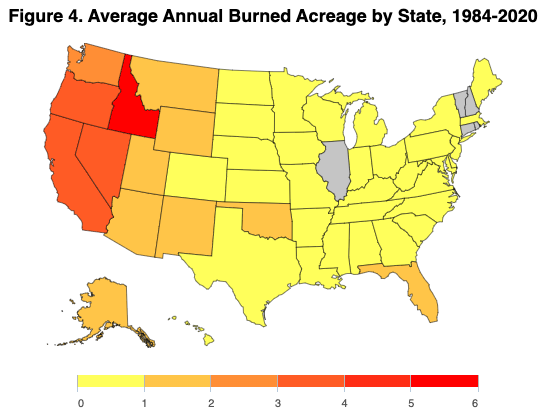
Wildfires are a normal occurrence in nature, happening everywhere, every year. In North America, the west coast is especially prone to wildfires due to the “Mediterranean” climate – most moisture comes in the winter, and summers are dry and hot.
Due to the way the jet stream(s) work, we usually see the smoke from those wildfires disperses from east to west, but certain weather patterns can cause the smoke to linger in specific geographies – just like smog.


Since the late ’90s, we’ve seen an uptick in the annual area burned by wildfires. Experts attribute this to climate change, and many say that “smoke season” will become the norm.
Smoke Is Everywhere, Eh?
In 2021, I experienced the “smoke-pocalypse” when I was living in Vancouver, British Columbia on Canada’s West Coast. It looked like a scene from Bladerunner. Nearly 2/3 of BC residents live on the South Coast in the Marine Climate Zone, which is temperate enough that most homes don’t have air conditioning. The summer of 2021 also saw one of the worst heatwaves in decades at the same time as the wildfire smoke event, which resulted in over 600 heat-related deaths in the province.

Last year, I moved from Vancouver, British Columbia to Halifax, Nova Scotia, and – one month ago – my family and I were evacuated due to wildfires raging through the suburbs less than a mile from our home. We’re safe now, but the rest of Canada is not.
This summer is already Canada’s worst wildfire season on record. As of this writing, over 350 wildfires are burning across Canada, 150 of those are out of control. Most of those are in Quebec, followed by BC, then Ontario and Alberta. 19 million acres have already burned, which has surpassed the previous annual record of 1989. Earlier in June, things were so bad that we chad to call in the army and firefighters from partner countries
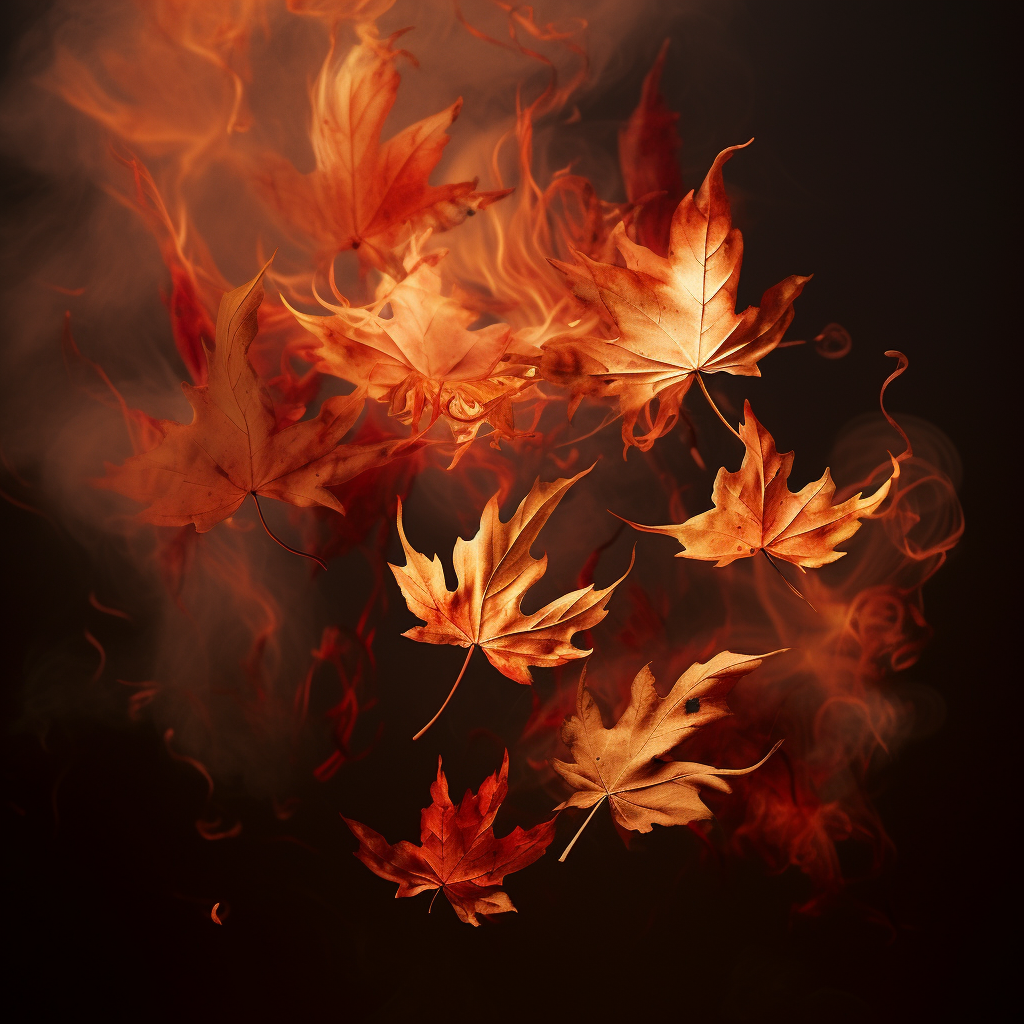
These high-risk conditions are caused by a combination of extreme temperatures and low rainfall across much of Canada and the Northern US, plus decades of questionable forest policies. We are likely to have 2-3 more months of hot, dry weather, which is why you need to know about this risk.
Fingers crossed for conditions to improve, but the outlook is bleak (see below).
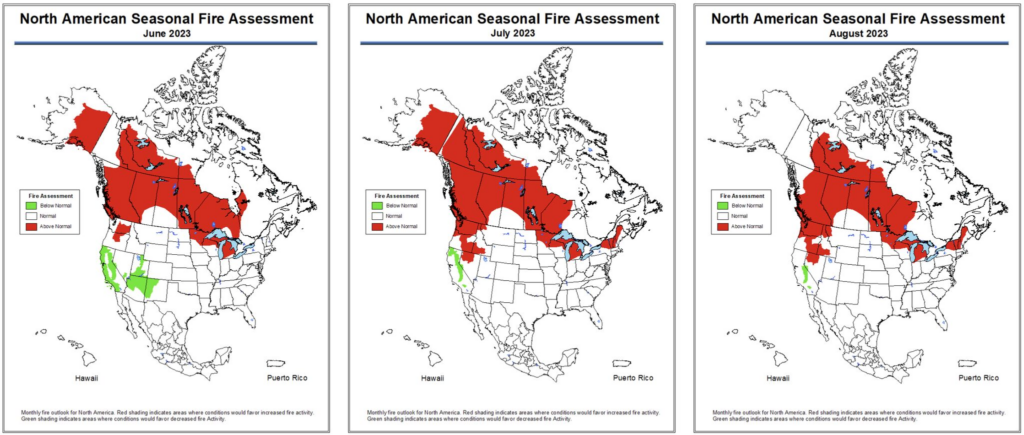
Why does wildfire smoke smell like burning plastic?
Wildfires mostly burn in forests, right? It should be trees that are burning – it’s not like these wildfires are destroying that many man-made structures or manufactured materials, right?
Yes. While it is the forests that are being burnt, it’s more than just the trees.
- When a forest is burned quickly, the fuel is mostly the leaves, branches, and underbrush (biomass). The trunks of the trees themselves are often left standing, or burn slower, as seen in the image below
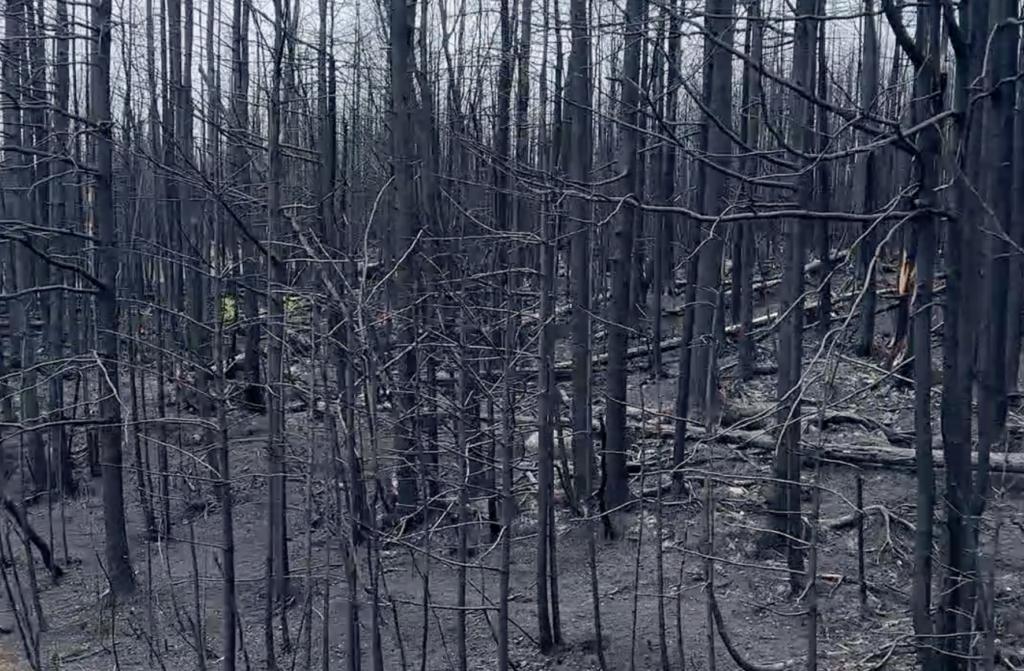
- This biomass releases many volatile organic compounds (VOCs) – which are group of carbon-containing chemicals that easily vaporize at room temperature. Some VOCs, such as benzene and formaldehyde, have a distinctive plastic-like smell.
- When VOCs are exposed to ultraviolet (UV) radiation from the sun, they can react and form new compounds. Some of these new compounds, such as acrolein, also have a plastic-like smell.
- The longer smoke from a wildfire hangs in the air, the more time it has to interact with UV radiation and other pollutants. This can cause the smoke to develop a stronger plastic-like smell.
So that’s why the wildfire smoke often smells like plastic. And it’s not the particles themselves that emit odors, it’s the gasses.

Speaking of Gasses: Carbon monoxide & Wildfires
At the mQ HQ, we keep a few devices continuously monitoring the air inside our offices. One of those devices is SensorCon Inspector Industrial Pro Portable CO Monitor. Many of you carry a monitor like this with you as a safety precaution when working with combustion appliances, and most of the time they should be reading 0 ppm, right?
Carbon monoxide is present in Earth’s atmosphere at very low concentrations. A typical concentration of CO in Earth’s troposphere is around 100 ppb, but it can be as low as 50 ppb on good days. CO can linger in the atmosphere for months before breaking down, and can travel thousands of miles.
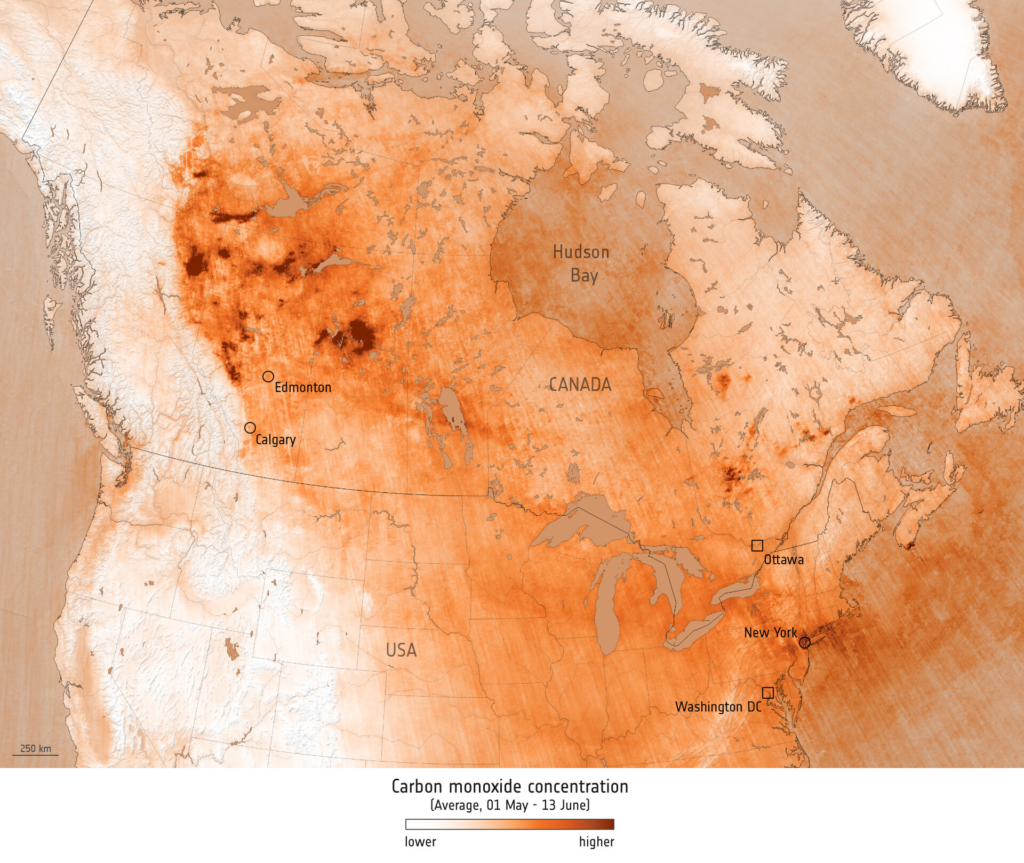
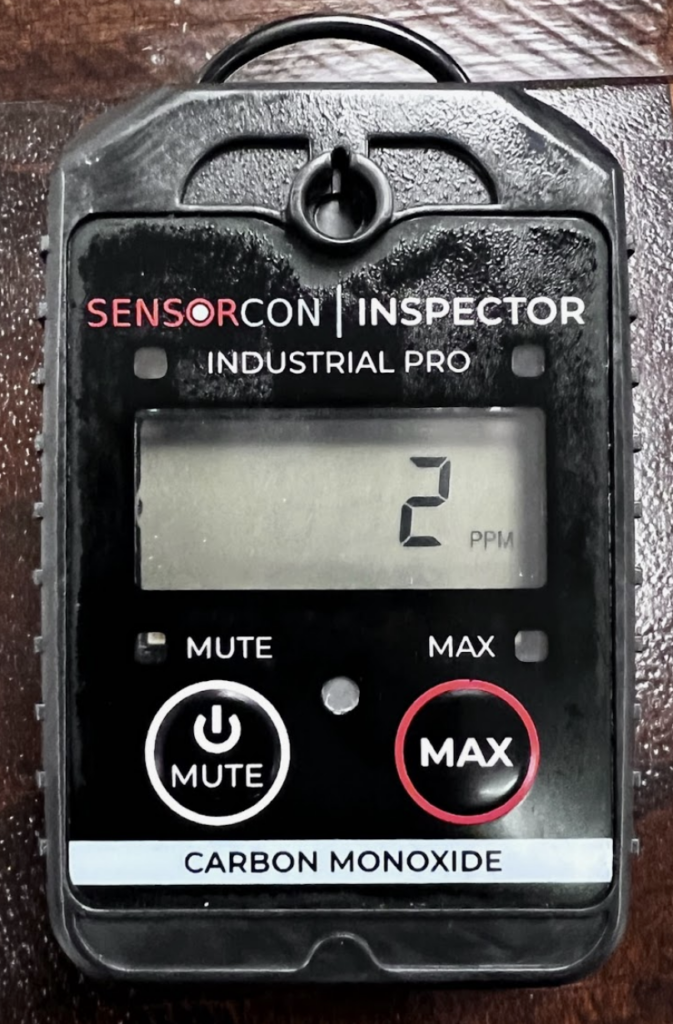
During wildfires, outdoor carbon monoxide rates will elevate substantially. At our office in Akron, OH, our SensorCon CO Monitor has been reading 2ppm on average for the past few days, sometimes reaching 3ppm. While this is below the 9-15 ppm level that you’ve been taught to worry about as an HVAC professional, chronic exposure to lower levels of carbon monoxide will impact sensitive populations – levels of 3 ppm or more result in a 6% increase of asthma-related hospital admissions.
Why Should This Matter To HVAC Professionals
You are the managers of the air in your customer’s homes.
Your customers ask you to provide them with a comfortable indoor environment through heating and cooling systems. But the air we breathe is far more than just temperature and humidity. There are a vast array of particles and chemicals in the air indoors and outdoors which – though difficult to fully quantify and measure – collectively fall under the term Indoor Air Quality (IAQ).
Due to COVID-19, IAQ went from being a fringe topic to being a continuous conversation and sales opportunity for all HVAC contractors. This summer, the source of the conversation will shift from COVID 19 to wildfire smoke. Many HVAC professionals don’t think twice about smoke exposure, because you have healthy immune systems and are often exposed to situations more harmful than wildfire smoke. Many do not realize that prolonged exposure to airborne pollutants is proven to reduce your life expectancy and increase your chances for cardiovascular disease.
Consider this: If you have a family or want to avoid massive medical bills in the future, you may want to start taking pollutant exposure seriously.
Your Customers Are A Population At Risk
Short term effects of wildfire smoke exposure include coughing, difficulty breathing, and the exacerbation of existing conditions – such as asthma or COPD. Large wildfire smoke events lead to notable increases in emergency room visits due to heart attacks, strokes and other health problems brought on by smoke exposure.
Though it may not be you experiencing these symptoms, many of your customers belong to “sensitive” population groups. These customers are families with young children (20M households), elderly folks with weakening immune systems (55M), and now nearly 30M still have Long COVID – a persistent cardiovascular condition that impacts breathing, heart functions, thinking and physical capabilities.
These people need your help, and you can have the greatest impact on their health because most wildfire smoke exposure doesn’t happen while outdoors.
Indoor Wildfire Smoke Exposure
When you’re outside, the presence of wildfire smoke is obvious, and each one of us decides whether we want to wear a mask to filter out some of the harmful particles, raw-dog the smoke without a mask, or stay inside to avoid the smoke. But the majority of wildfire smoke exposure occurs indoors due to infiltration.
The Infiltration of wildfire smoke occurs through the home’s intentional holes (windows, doors, ventilation ductwork), or unintentional holes – such as cracks in the building envelope – which is also known as leakage. And once the smoke gets in, it will linger until something is done about it.
Back when I was with HAVEN IAQ, I created a video series for professionals explaining the differences between acute and chronic IAQ problems. Acute IAQ problems are high levels of pollutants for small periods of time (cooking, cleaning), whereas chronic IAQ problems are lower levels of pollutants that linger, often at lower (but still dangerous) levels. Both are harmful, but many IAQ monitors – especially those which are used for spot-testing – only prioritize and alert for acute problems.

Even without wildfire smoke, Over 100M Americans live in areas with chronically bad outdoor air quality, mostly due to emissions from power plants, cars, agriculture, unpaved roads, and construction sites. EPA reports have reported that IAQ levels are often 2-5 times higher than outdoor pollution levels, mostly due to much of the housing stock having leaky ducts and leaky envelopes – and an HVAC system that’s only designed to heat and cool, not to manage IAQ.
What The Experts Are Recommending
The expert recommendations of how to protect one’s home from wildfire smoke can be distilled down to the following points – which are also appropriate whenever outdoor air quality is unhealthy to breathe.
Feel free to reuse these points in your promotional and training materials for your customers.
- Close windows and doors. This will help to keep smoke from entering your home.
- Turn on your central HVAC system. This will help to circulate the air in your home and remove smoke particles.
- Use an in-room air purifier for supplemental air purification. Make sure it has carbon filter media if you also want to capture the chemical component of the smoke.
- Change your HVAC filters regularly. This will help to remove smoke particles from your HVAC system. If using carbon filter media, it will have to be changed more often.
- Ventilate your home only when it’s safe to do so. Check the air quality in your area through the AirNow tools, or other outdoor AQI monitoring services.
- Avoid activities that create more smoke indoors. This includes smoking, using gas stoves or fireplaces, and burning candles or incense. When you can’t ventilate, the indoor pollutants will become trapped.
- Clean surfaces regularly. Smoke particles can settle on surfaces in your home. Cleaning these surfaces regularly can help to reduce your exposure to smoke.
- Take breaks from the smoke. If you are feeling sick or having trouble breathing and the outdoor air is clear, go outside for some fresh air or look for a clean air shelter in your community. You can also take a shower or bath to help remove smoke particles from your skin and hair.
- If you have underlying health conditions, talk to your doctor about how to protect yourself from smoke.
Recommendation sources: Robert Bean – Dealing with smoke from wildfires, Government of Canada – Guidance for Cleaner Air Spaces during Wildfire Smoke Events; EPA – Wildfires and Indoor Air Quality (IAQ); CBC NEWS – Expert shares air flow tips to deal with fire smoke
What Consumers Are Doing To Protect Themselves
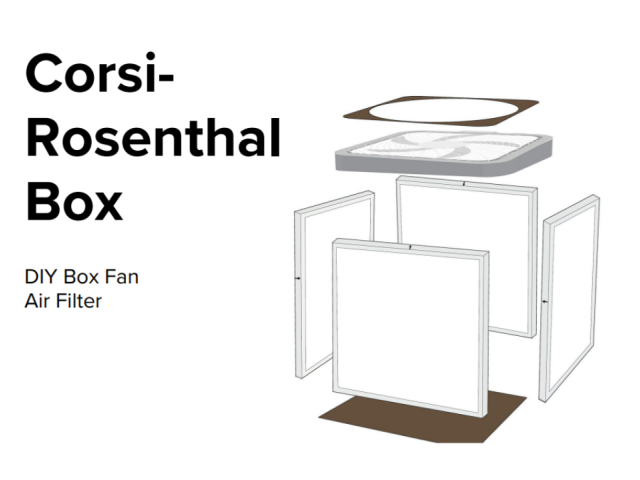
During wildfire smoke events, most homeowners have been flocking to retail stores to buy up room air purifiers – and when those are out of stock, they build a DIY solution like the Corsi-Rosenthal box, which performs spectacularly well for the price, but can be too noisy for a home.
In-room purifiers come in all shapes and sizes, and many don’t perform nearly as well as they advertise – like the wildly popular Molekule. To combat misinformation and benchmark performance, the Association of Home Appliance Manufacturers (AHAM) invented a metric called Clean Air Delivery Rate (CADR) to help consumers understand the capabilities of in-room purifiers.
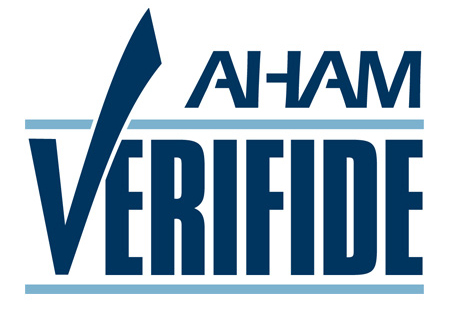
CADR is a measure of how well an air purifier removes pollutants – higher CADR means more pollutants removed.CADR is measured for 3 types of pollutants: smoke, pollen, dust, so consumers must choose a CADR for pollutants they care about. CADR is also only valid for specific room size – so they must choose a room size, noise level, filter type, price when shopping. Also, falsified CADR measurements are found across all price points, leaving consumers with underperforming, in-room noise makers. Luckily, there are independent test labs and researchers that test and publish the results of their findings.
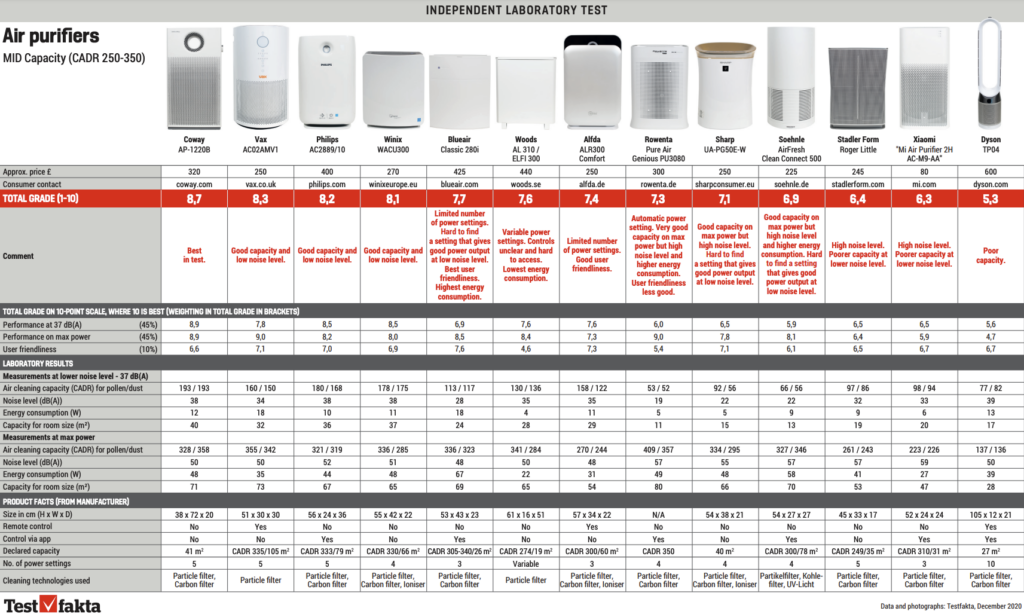
So What Should You Do About It?
Why does this matter to you as an HVAC professional? It’s not your job to sell in-room purifiers, but recognizing purchasing behaviors associated with triggers (eg wildfire smoke) are opportunities to insert your own services as a viable investment that will do more than most in-room purifiers.
In part two of this series, we’ll present an exhaustive list of recommendations of what an HVAC contractor can do to address wildfire smoke in a profitable and scientifically proven way.
